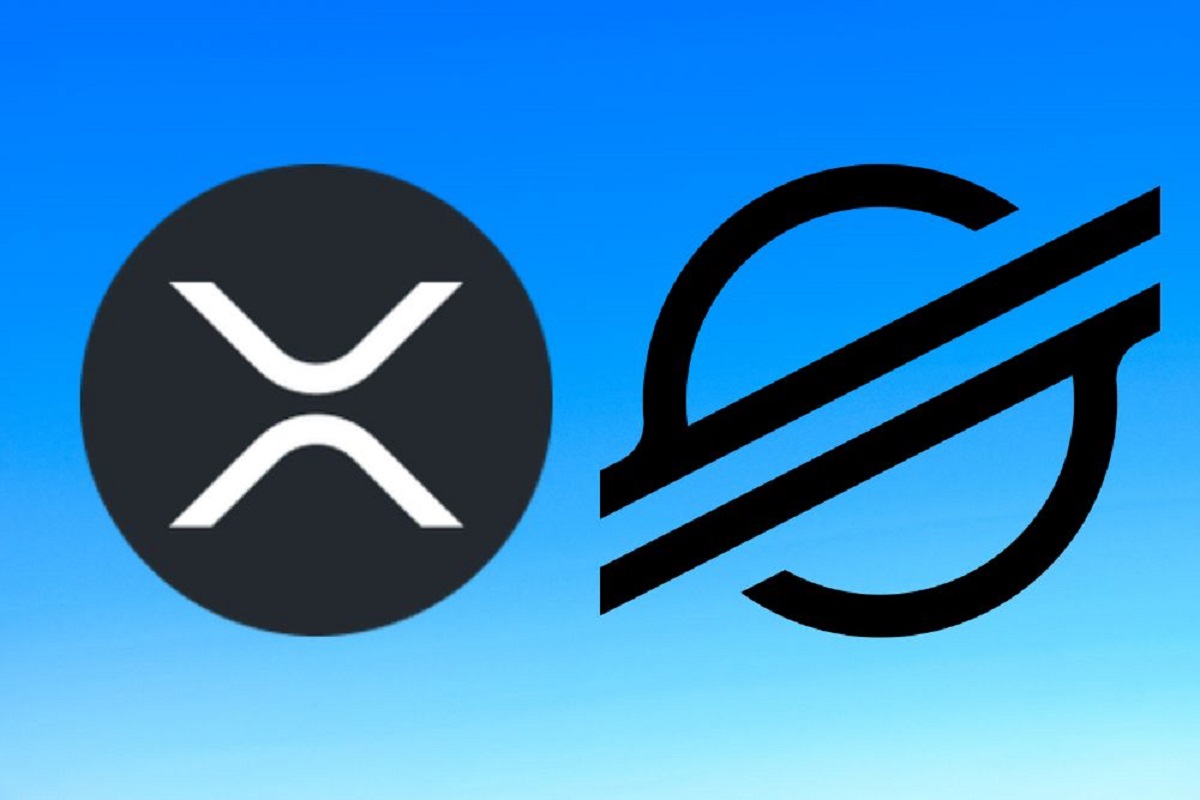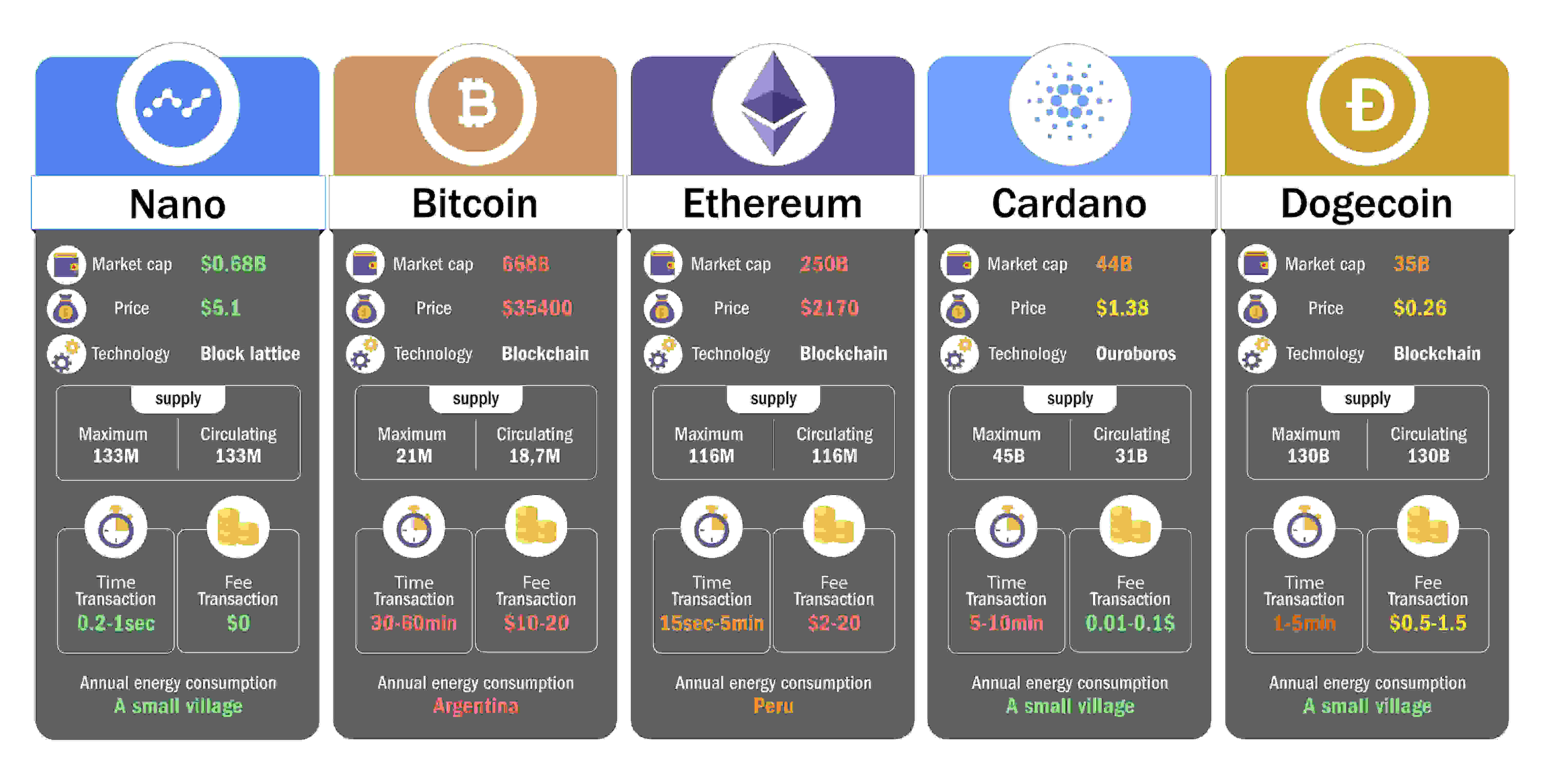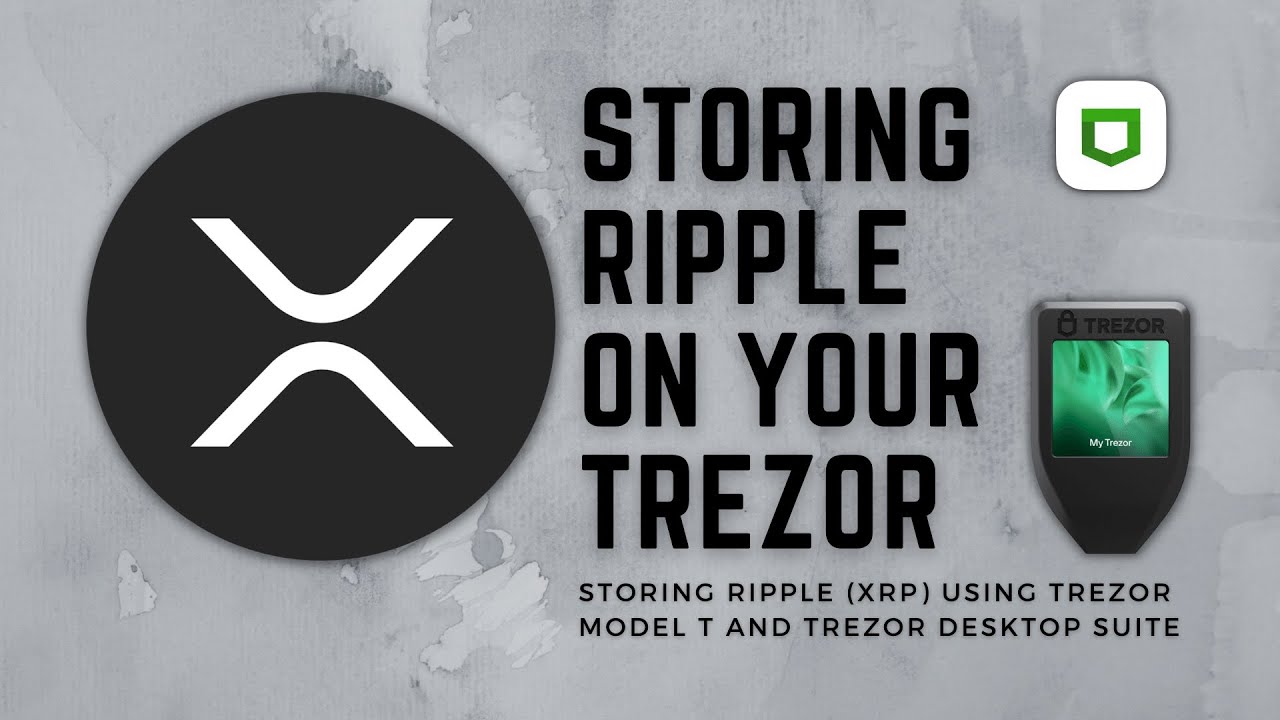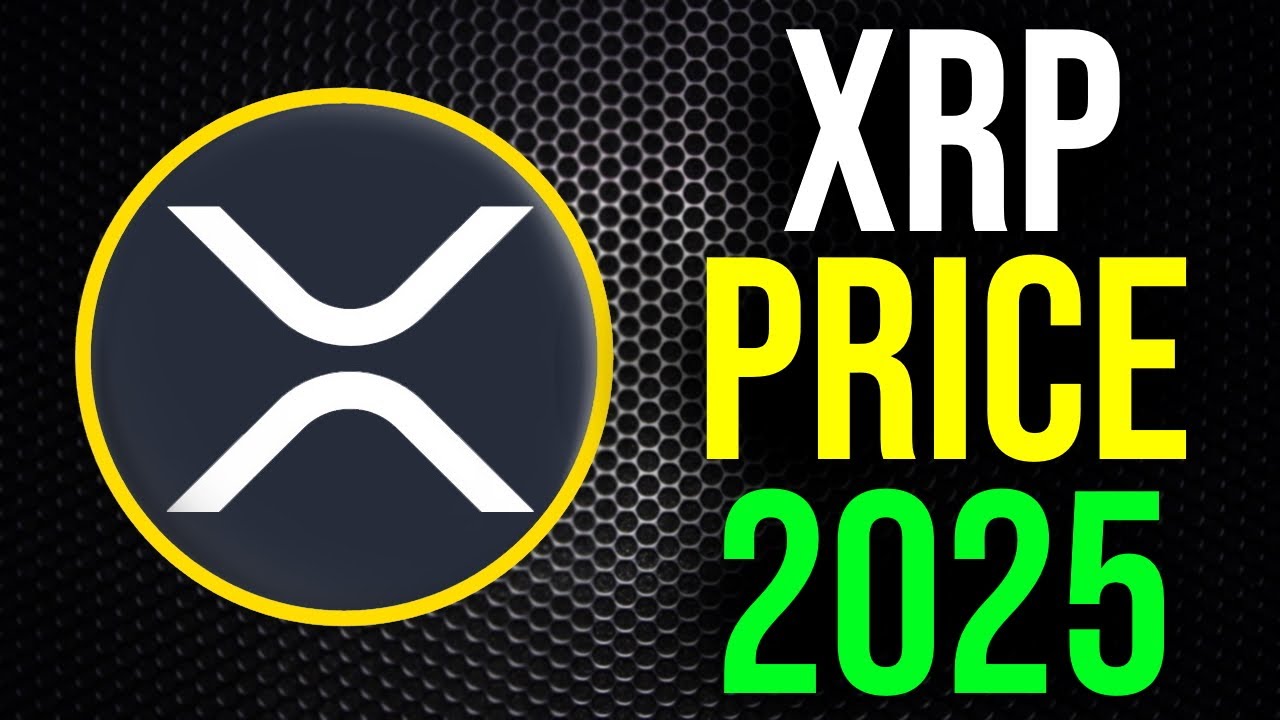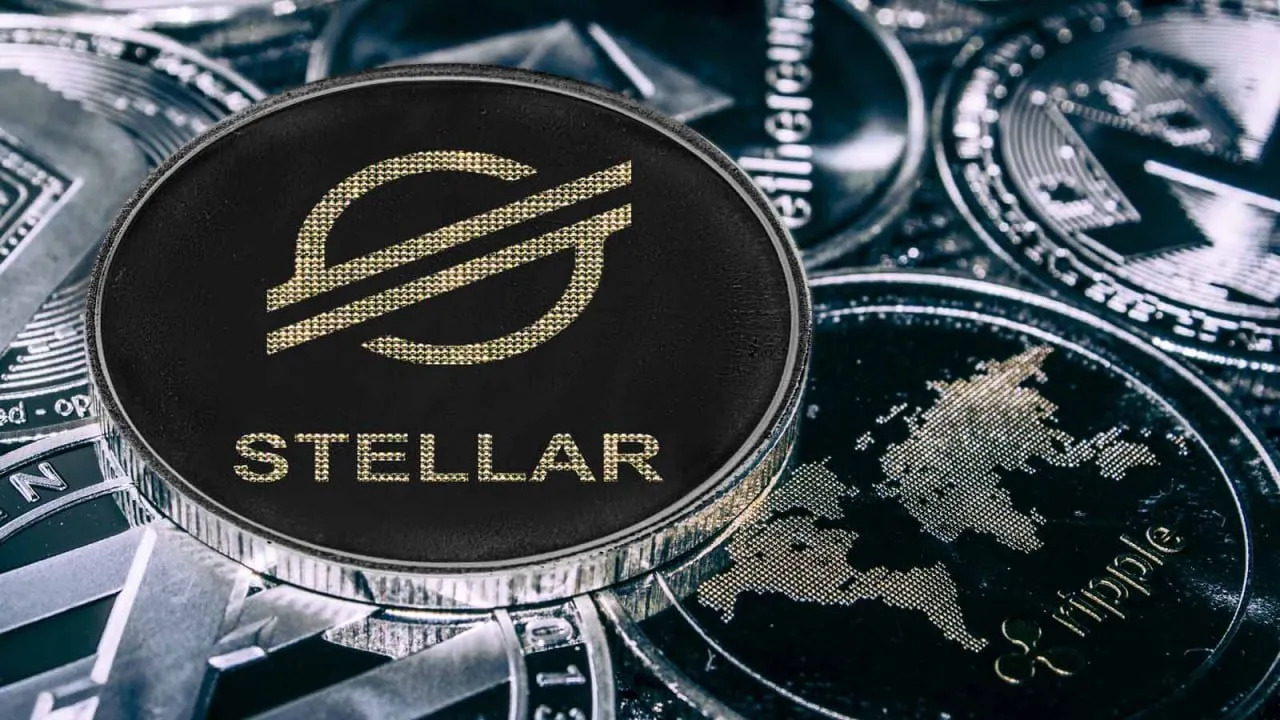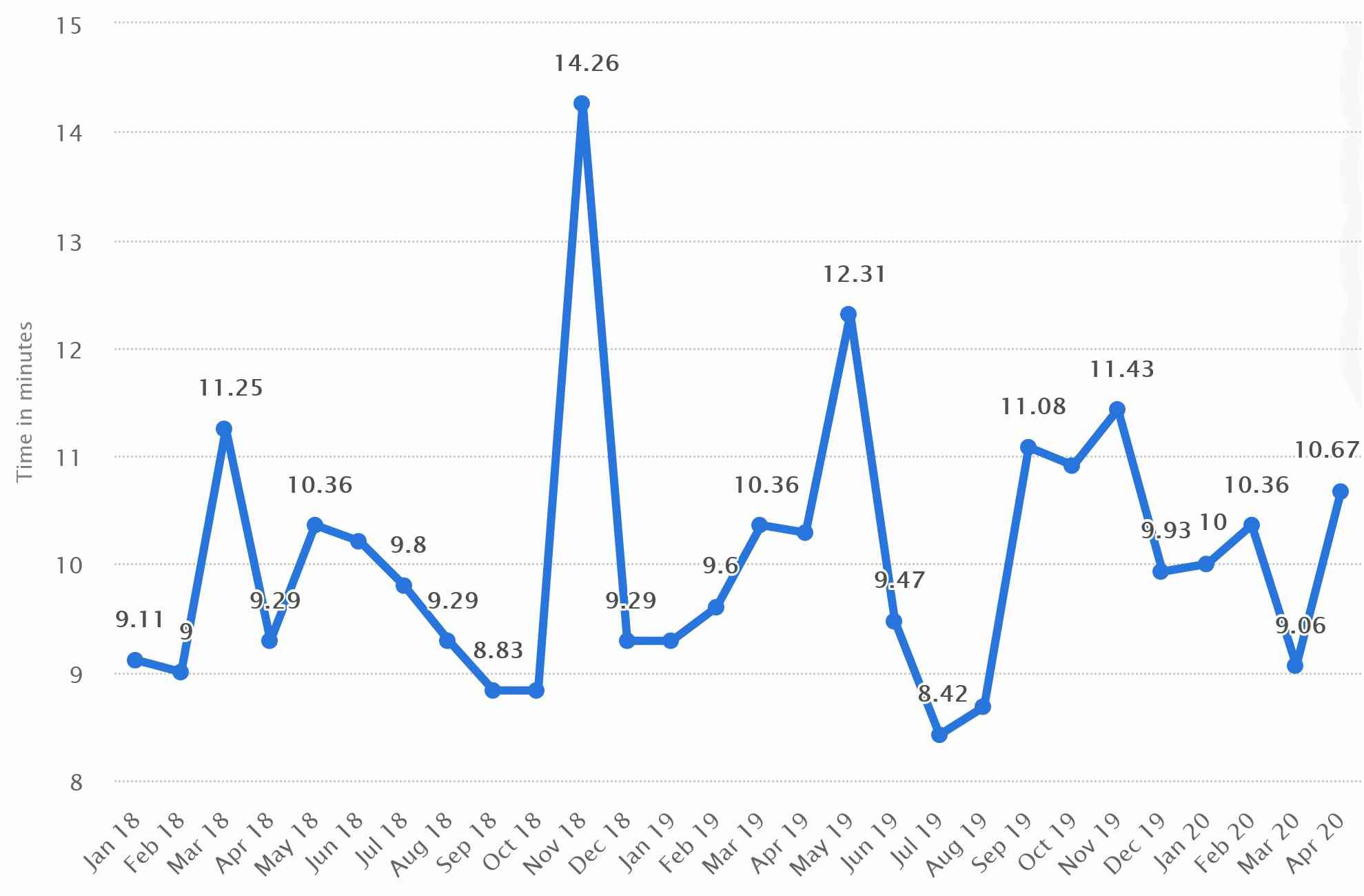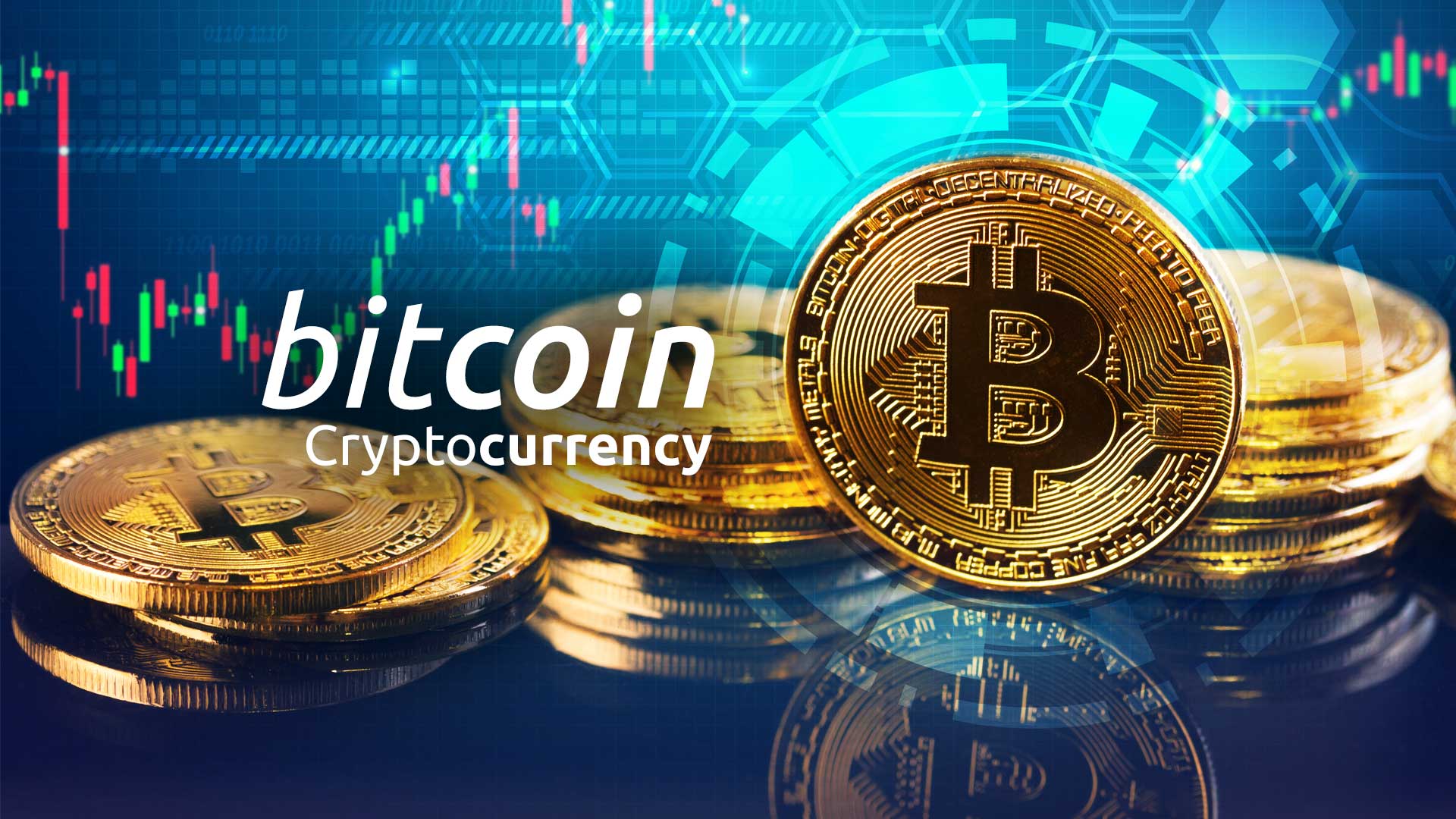Introduction
The world of cryptocurrencies is constantly evolving, with new digital assets entering the market to revolutionize the way we handle transactions. Two such cryptocurrencies that have gained considerable attention are XRP and XLM. These cryptocurrencies, though similar in some aspects, have unique features and use cases that set them apart.
In this article, we will explore the world of XRP and XLM, diving into their history, functionality, use cases, benefits, and challenges. Whether you are a crypto enthusiast or a curious investor, understanding these cryptocurrencies will empower you to make informed decisions about their potential in the ever-expanding world of digital finance.
But before we delve into the specifics of XRP and XLM, let’s take a moment to briefly explain what cryptocurrencies are and how they operate.
Cryptocurrencies are digital or virtual forms of currency that use cryptography for secure transactions and control the creation of additional units. They operate independently of a central authority, such as a government or financial institution. Instead, they rely on decentralized technology, known as blockchain, to record transactions in a transparent and tamper-proof manner.
With that foundational knowledge in mind, let’s now explore what sets XRP and XLM apart in the world of cryptocurrencies.
What is XRP?
XRP is a digital asset and cryptocurrency that was created by Ripple Labs in 2012. It is designed to facilitate fast, low-cost international money transfers and improve the efficiency of cross-border transactions. Unlike other cryptocurrencies, XRP does not rely on a traditional blockchain. Instead, it uses a consensus algorithm called the XRP Ledger.
The XRP Ledger is a decentralized ledger powered by a network of independent validators. It ensures secure and instant transactions of XRP, with a high throughput capability of processing thousands of transactions per second. This makes XRP an attractive choice for financial institutions and remittance services.
One of the key features of XRP is its speed. Transactions using XRP can be settled in just a few seconds, making it one of the fastest cryptocurrencies available. This speed, combined with the scalability of the XRP Ledger, allows for efficient and cost-effective cross-border payments.
Another distinguishing factor of XRP is its supply. Unlike Bitcoin and other cryptocurrencies with a limited supply, XRP has a total supply of 100 billion. However, not all of these XRP tokens are in circulation. Ripple Labs controls a significant portion of the supply, which has led to debates and speculations about its centralization.
In terms of adoption, XRP has gained traction among financial institutions for its potential to revolutionize the traditional banking system. Ripple Labs has partnered with numerous banks and financial institutions to integrate XRP into their cross-border payment systems. This has the potential to reduce the costs and time associated with international money transfers.
Overall, XRP aims to bridge the gap between traditional finance and the cryptocurrency world, providing a fast and efficient solution for cross-border transactions. However, it is important to note that XRP’s association with Ripple Labs and its centralized supply has sparked controversy and debates within the cryptocurrency community.
The History of XRP
XRP has a rich history that dates back to 2012 when Ripple Labs, a San Francisco-based technology company, created it. The goal was to develop a digital asset that could facilitate fast and cost-effective cross-border transactions.
Ripple Labs, founded by Chris Larsen and Jed McCaleb, initially intended to create a decentralized digital currency similar to Bitcoin. However, they soon realized the limitations of the existing blockchain technology in terms of scalability and transaction speed.
To overcome these challenges, Ripple Labs introduced the XRP Ledger, a distributed ledger technology that operates independently of a central authority. The XRP Ledger uses a unique consensus algorithm called the Ripple Protocol Consensus Algorithm (RPCA) to validate transactions and secure the network.
In 2012, Ripple Labs released the XRP Ledger and issued 100 billion XRP tokens. While a significant portion of the tokens was allocated to Ripple Labs, the company pledged to distribute them gradually to increase decentralization and promote wider adoption.
Over the years, XRP has gained recognition as a cryptocurrency that can revolutionize the traditional banking system. Ripple Labs partnered with numerous banks and financial institutions to integrate XRP into their cross-border payment systems. This collaboration aimed to leverage the speed and efficiency of XRP to reduce costs and enhance liquidity in global financial transactions.
In 2017, XRP witnessed a surge in value, reaching an all-time high of over $3 per token. This increase in value was driven by both market speculation and the growing adoption of XRP by financial institutions. However, XRP’s price has experienced volatility, often influenced by regulatory concerns and market sentiment.
Despite its success, XRP has faced legal challenges, with the U.S. Securities and Exchange Commission (SEC) filing a lawsuit against Ripple Labs in December 2020. The SEC alleged that XRP is an unregistered security, leading to significant legal and regulatory uncertainties surrounding the cryptocurrency.
Currently, XRP continues to attract attention and remain a prominent player in the world of cryptocurrencies. Its ability to facilitate fast, low-cost cross-border transactions has positioned it as a competitor to traditional financial systems, driving both interest and controversy in the crypto community.
How Does XRP Work?
XRP operates on a unique technology called the XRP Ledger, which differs from traditional blockchain systems. Understanding how XRP works is key to appreciating its capabilities as a digital asset for fast and efficient transactions.
At the core of XRP’s functionality is the XRP Ledger, a decentralized and open-source distributed ledger that maintains a record of all XRP transactions. Unlike proof-of-work (PoW) or proof-of-stake (PoS) mechanisms used by other cryptocurrencies, the XRP Ledger utilizes a consensus algorithm called the Ripple Protocol Consensus Algorithm (RPCA).
RPCA relies on a group of trusted validators to confirm transactions and maintain the integrity of the network. These validators continuously vote on the validity of transactions, aiming to reach a consensus. This consensus process allows for fast and secure settlement of XRP transactions.
One of the key advantages of XRP is its speed of transaction settlement. Unlike other cryptocurrencies, which may take minutes or even hours to confirm transactions, XRP transactions are typically settled in a matter of seconds. This rapid transaction speed makes XRP an attractive choice for financial institutions and businesses that require real-time payments.
Another important aspect of XRP’s functionality is its role as a bridge currency. XRP can be used as a medium of exchange between different fiat currencies or other digital assets. It acts as a liquidity provider, facilitating seamless and cost-effective conversions between different forms of value.
To facilitate cross-border transactions, financial institutions can use XRP as a bridge currency between two fiat currencies. This eliminates the need for multiple intermediaries, reduces transaction costs, and increases transaction speed. The seamless exchange of funds using XRP promotes liquidity and enables efficient global money transfers.
Furthermore, XRP serves as a security measure in the XRP Ledger. Each transaction on the ledger requires a small amount of XRP to be destroyed as a transaction fee. This fee helps prevent spam and malicious activities on the network, ensuring the integrity and security of the transactions.
Overall, XRP’s functionality is centered around its ability to provide fast, low-cost, and secure transactions. The XRP Ledger, coupled with the consensus algorithm RPCA, allows for rapid settlement of transactions, making it an appealing choice for financial institutions looking to streamline cross-border payments.
Use Cases for XRP
XRP offers several compelling use cases that make it a valuable asset in the world of finance and beyond. Let’s explore some of the key use cases for XRP.
1. Cross-Border Payments: One of the primary use cases for XRP is facilitating fast and cost-effective cross-border transactions. Financial institutions can leverage XRP’s speed and low fees to settle international payments quickly, reducing the reliance on legacy systems that often involve multiple intermediaries and high transaction costs.
2. Liquidity Provider: XRP acts as a bridge currency, providing liquidity between different fiat currencies and digital assets. By using XRP as an intermediary, financial institutions can execute seamless and efficient currency conversions, enabling faster and more affordable transactions.
3. Remittances: XRP’s fast transaction settlement and low fees make it an ideal solution for remittance services. Migrants can send money back to their home countries using XRP, bypassing slow and expensive traditional remittance channels. This allows for quicker access to funds and lower fees, benefiting both senders and recipients.
4. Micropayments: XRP’s scalability and low transaction fees make it well-suited for facilitating microtransactions. Content creators, such as bloggers and artists, can accept XRP for small payments, providing a viable revenue stream without the need for intermediaries or high transaction costs that can eat into profits.
5. Tokenization: XRP can be used as a platform for creating and managing tokens representing real-world assets such as stocks, commodities, or even real estate. This opens up possibilities for fractional ownership, simplified asset transferability, and increased liquidity in various industries.
6. Banking Solution: Ripple, the company behind XRP, has partnered with numerous banks and financial institutions to integrate XRP into their payment systems. This collaboration allows for faster and more efficient cross-border payments, enhancing liquidity and reducing transaction costs.
These are just a few examples of the use cases for XRP. However, it is important to note that the adoption and implementation of XRP in various industries are ongoing processes, and the full potential of XRP is yet to be realized.
As with any digital asset, it is crucial to consider the regulatory landscape, market factors, and technological advancements when evaluating the suitability of XRP for specific use cases. Building trust, establishing partnerships, and addressing regulatory concerns are key factors that will shape the future of XRP and its broader applications.
Benefits and Challenges of XRP
XRP, as a digital asset and cryptocurrency, comes with its own set of benefits and challenges. Let’s explore some of the advantages and considerations associated with XRP.
Benefits:
1. Speed: XRP offers incredibly fast transaction settlement times, typically taking just a few seconds. This makes it an attractive option for businesses and individuals looking to conduct real-time transactions.
2. Cost-Effectiveness: With low transaction fees, XRP presents a cost-effective solution, especially for cross-border transactions. Its efficient and economical nature has the potential to lower remittance fees and make international payments more accessible.
3. Scalability: The XRP Ledger has proven scalability, with the ability to handle thousands of transactions per second without compromising speed or security. This scalability makes it suitable for widespread adoption and use in various industries.
4. Bridging Fiat Currencies: XRP acts as a bridge currency, facilitating smooth conversions between different fiat currencies. This feature makes it easier and more efficient to exchange and transfer value across borders without relying on multiple intermediaries.
5. Partnership with Financial Institutions: XRP’s collaboration with banks and financial institutions enhances its credibility and potential for widespread use. Partnerships with established institutions help drive adoption and pave the way for revolutionizing traditional banking systems.
Challenges:
1. Regulatory Uncertainty: XRP faces ongoing regulatory scrutiny, particularly in the United States. The legal status of XRP as a security or currency is yet to be definitively determined. Regulatory challenges can impact its adoption and price volatility.
2. Centralization Concerns: Ripple Labs, the company behind XRP, holds a significant amount of XRP tokens. This centralized supply has raised concerns about the level of decentralization and control over the cryptocurrency, leading to debates within the crypto community.
3. Market Volatility: Like many cryptocurrencies, XRP has experienced notable price fluctuations, often influenced by market sentiment and regulatory developments. The volatile nature of digital assets can present risks for investors and users.
4. Competition: XRP faces competition from various other cryptocurrencies and digital payment platforms that aim to provide similar solutions. The cryptocurrency landscape is dynamic, with evolving technologies and new players entering the market regularly.
5. Adoption Challenges: While XRP has made significant progress in partnering with financial institutions, widespread adoption is still a work in progress. Overcoming reluctance, integrating new technologies, and addressing industry concerns are essential for broader adoption of XRP.
As with any investment or financial decision, it is crucial to thoroughly research and consider all relevant factors before engaging with XRP. Assessing the benefits and challenges discussed here, along with market trends and regulatory developments, will help inform your understanding of XRP’s potential and associated risks.
What is XLM?
XLM, also known as Stellar Lumens, is a cryptocurrency that operates on the Stellar blockchain platform. It was created in 2014 by Jed McCaleb, the co-founder of Ripple Labs, with the aim of providing fast, low-cost, and efficient transactions.
Similar to other cryptocurrencies, XLM utilizes decentralized technology to facilitate peer-to-peer transactions. However, what sets XLM apart is its focus on enabling seamless cross-border transactions and financial inclusion.
The Stellar network is designed to connect financial institutions, payment systems, and individuals, allowing for the easy transfer of value across various currencies and borders. XLM serves as the native digital asset of the Stellar network and plays a vital role in facilitating transactions and maintaining the network’s integrity.
XLM’s consensus mechanism, known as the Stellar Consensus Protocol (SCP), enables fast and secure transaction validation. SCP uses a federated Byzantine agreement model, allowing a network of trusted validators to agree on the validity of transactions without the need for energy-intensive mining.
One of the primary goals of the Stellar network is to make financial services accessible to those who are unbanked or underserved by traditional financial systems. The platform enables the creation and issuance of digital assets, known as tokens, that represent traditional currencies, commodities, real estate, or even other cryptocurrencies. These tokens can be easily transferred and exchanged on the Stellar network.
Furthermore, the Stellar network supports the integration of anchor institutions. Anchors act as a bridge between traditional financial systems and the Stellar network, facilitating the conversion between fiat currencies and tokens on the blockchain. Anchors ensure the stability and liquidity of assets on the network, enabling seamless transactions and access to a wide range of global assets.
It is important to note that XLM serves multiple purposes within the Stellar ecosystem. It acts as a bridge currency for facilitating value exchange between different assets on the network and as a measure to deter spam and malicious activities through small transaction fees.
Overall, XLM and the Stellar network aim to provide a platform for fast, secure, and affordable cross-border transactions, promoting financial inclusivity, and expanding access to global financial services.
The History of XLM
XLM, also known as Stellar Lumens, has an interesting history that dates back to 2014 when it was created by Jed McCaleb, the co-founder of Ripple Labs. McCaleb’s vision was to develop a blockchain network that could facilitate fast and affordable financial transactions, especially for the underserved and unbanked populations.
The initial idea for Stellar emerged from McCaleb’s desire to address some of the limitations he observed in the existing financial systems. He believed that by leveraging blockchain technology, he could create a platform that promotes financial inclusivity and unlocks new opportunities for individuals and businesses worldwide.
Stellar Lumens, or XLM, was introduced as the native cryptocurrency of the Stellar network. The network’s primary objective was to connect financial institutions, payment systems, and individuals, enabling the seamless transfer of value across borders and currencies.
Stellar started as a fork of the Ripple network but soon evolved into its own open-source project. McCaleb formed the Stellar Development Foundation (SDF) as a non-profit organization to oversee the development and promotion of the Stellar network and its cryptocurrency, XLM.
Since its inception, Stellar has undergone significant advancements and improvements. In 2015, the Stellar Consensus Protocol (SCP) was introduced as a consensus mechanism for the network. SCP eliminated the need for energy-intensive mining and enabled fast and secure transaction validation through a network of trusted validators.
Over the years, Stellar has gained recognition for its focus on financial inclusion and cooperation with various organizations. The SDF has formed partnerships with governments, technology companies, financial institutions, and non-profit organizations to further the goal of creating an accessible and inclusive global financial network.
In 2018, Stellar partnered with IBM to explore the use of blockchain technology in cross-border payments. The collaboration aimed to leverage Stellar’s fast and cost-effective transaction capabilities to improve the efficiency of international money transfers.
Stellar Lumens has witnessed growing adoption and support from the cryptocurrency community and financial industry. Its emphasis on low fees, fast transaction settlement, and inclusivity has attracted attention and made it an attractive option for various use cases, including remittances, micropayments, and tokenization of assets.
However, like any cryptocurrency, Stellar Lumens has faced challenges and market volatility. It has encountered competition from other blockchain platforms and regulatory considerations. Adapting to changing market dynamics and addressing regulatory concerns are ongoing challenges that Stellar and XLM continue to face.
Nonetheless, with its strong focus on financial inclusion, applications in cross-border transactions, and partnerships with established players, Stellar Lumens remains a notable player in the world of cryptocurrencies, driving innovation and promoting accessible financial services for all.
How Does XLM Work?
XLM, or Stellar Lumens, operates on the Stellar blockchain platform, which provides a seamless infrastructure for fast and secure transactions. Understanding how XLM works is essential to appreciate its functionality and potential in the world of finance and decentralized applications.
At the core of XLM’s functionality is the Stellar Consensus Protocol (SCP), a consensus mechanism that ensures transaction validation and network security. SCP utilizes a federated Byzantine agreement model, allowing a network of trusted validators to reach consensus on the validity and order of transactions without the need for energy-intensive mining.
The Stellar network relies on a decentralized network of servers that run the Stellar Core software. These servers communicate with each other to maintain a synchronized and consistent view of the network. Transactions on the network are processed and validated by a subset of trusted validators, which helps ensure the integrity of the Stellar blockchain.
One of the key features of the Stellar network is its ability to facilitate the issuance and transfer of custom tokens. XLM serves as the native asset of the Stellar blockchain and acts as a bridge currency, facilitating the exchange of different tokens and fiat currencies. This flexibility allows users to tokenize real-world assets, such as currencies, commodities, or securities, and transact them on the Stellar network.
When a transaction is initiated on the Stellar network, the sender specifies the intended recipient, the asset type, and the amount to be transferred. The transaction is then transmitted to the network of validators for consensus, ensuring that the transaction is valid and adheres to the network’s rules. Once consensus is reached, the transaction is added to a block and becomes a part of the blockchain’s immutable history.
Another key aspect of the Stellar network is the integration of anchor institutions. Anchors act as a bridge between the traditional financial system and the Stellar network, facilitating the exchange and transfer of real-world assets and currencies. Anchors maintain accounts on the Stellar network and issue tokens that represent traditional currencies, allowing for seamless conversions between fiat currencies and tokens on the blockchain.
Moreover, the Stellar network incorporates a unique feature called pathfinding, which enables users to find the most efficient route for asset conversions. Pathfinding algorithms consider the network’s liquidity and market depth to determine the most cost-effective path for exchanging assets, ensuring optimal transaction execution.
Overall, XLM and the Stellar network aim to provide a platform for fast, secure, and affordable transactions across various currencies and borders. By leveraging decentralized technology and innovative features like SCP and pathfinding, Stellar Lumens seeks to foster financial inclusivity and enable the seamless transfer of value on a global scale.
Use Cases for XLM
XLM, or Stellar Lumens, offers a range of use cases that leverage its fast, low-cost transactions and focus on financial inclusivity. Let’s explore some of the key areas where XLM is being utilized:
1. Cross-Border Payments: Stellar Lumens excels at enabling fast and affordable cross-border transactions. Its blockchain infrastructure allows for seamless and efficient transfers of value between different currencies, bypassing intermediaries and reducing transaction costs. This makes XLM an attractive solution for remittances and international payments.
2. Micropayments: XLM’s low transaction fees and fast settlement times make it well-suited for micropayments. Content creators, developers, and artists can leverage XLM to receive small payments for their digital content or services, without being burdened by high transaction fees.
3. Tokenization of Assets: The Stellar network allows for the creation and issuance of tokens representing real-world assets. These tokens can be used to digitize assets such as currencies, commodities, stocks, or even real estate. XLM serves as a bridge currency, facilitating the exchange and transfer of these tokenized assets, providing increased liquidity and accessibility.
4. Banking the Unbanked: Stellar’s focus on financial inclusion makes it a powerful tool for providing access to banking services for the unbanked and underbanked populations. By using XLM, individuals without traditional banking access can store, transfer, and receive funds securely, opening up new opportunities and empowering financial independence.
5. Decentralized Exchanges: XLM’s fast and secure transactions make it an attractive option for decentralized exchanges (DEX). XLM can be used as a trading pair against other tokens on DEX platforms, enabling efficient and seamless asset swapping without the need for intermediaries.
6. Non-Profit and Social Impact Projects: Stellar’s focus on financial inclusion and low transaction costs makes it appealing for non-profit organizations and social impact projects. XLM can be used to provide aid, initiate microfinance programs, or enable access to basic financial services in underserved regions.
7. Stablecoin and Central Bank Digital Currency (CBDC) Infrastructure: Stellar’s blockchain infrastructure can serve as a foundation for stablecoins and Central Bank Digital Currencies (CBDCs), providing a reliable and secure platform for their issuance and transactions. XLM can be used as a bridge currency between different stablecoins or CBDCs, facilitating interconnectivity and liquidity in the digital asset ecosystem.
These use cases demonstrate the versatility and potential of XLM in revolutionizing various sectors, including finance, remittances, content creation, and social impact. As blockchain technology continues to evolve, additional innovative use cases for XLM are likely to emerge, forging a path towards a more inclusive and efficient financial future.
Benefits and Challenges of XLM
XLM, or Stellar Lumens, offers several benefits and faces certain challenges that are worth considering. Understanding these factors is crucial for evaluating its potential and suitability for various use cases. Let’s explore the benefits and challenges associated with XLM:
Benefits:
1. Fast and Low-Cost Transactions: Stellar Lumens provides fast transaction settlement times, typically within a few seconds. Additionally, XLM transactions have minimal fees, making it an ideal choice for individuals and businesses seeking cost-effective and efficient payments.
2. Financial Inclusion: Stellar Lumens focuses on providing access to financial services for the unbanked and underbanked populations. By leveraging XLM, individuals without traditional banking access can participate in the global economy, facilitating greater financial inclusivity and empowerment.
3. Decentralized and Scalable Network: Stellar operates on a decentralized blockchain network, ensuring that transactions are validated by a network of trusted nodes rather than a central authority. Furthermore, the Stellar network has demonstrated scalability and the ability to handle a high volume of transactions without compromising security.
4. Tokenization of Assets: Stellar allows for the creation and issuance of tokens representing real-world assets, such as currencies, securities, or commodities. This tokenization enables fractional ownership, increased liquidity, and simplified transferability of assets, unlocking new possibilities for asset management and investment.
Challenges:
1. Competition: Stellar Lumens faces competition from other blockchain platforms and cryptocurrencies that aim to provide similar solutions. The cryptocurrency market is dynamic, with evolving technologies and new entrants continually presenting challenges to maintain a competitive edge.
2. Regulatory Considerations: Like all cryptocurrencies, Stellar Lumens operates in a regulatory landscape that is constantly evolving and can differ between jurisdictions. Regulatory frameworks related to cryptocurrencies, blockchain technology, and digital assets can impact the adoption, acceptance, and usage of XLM.
3. Interoperability: As blockchain technology continues to advance, interoperability between different networks and platforms becomes a critical factor. Integration with existing financial systems and seamless communication between different blockchain networks are challenges that need to be addressed for the widespread adoption of XLM.
4. Network Development: Continual network development and growing the ecosystem around XLM is essential for its long-term success. Stellar Lumens needs to attract more users, developers, and businesses to build applications and utilize XLM for a wide range of use cases.
Considering the benefits and challenges associated with XLM is crucial for assessing its potential and understanding the dynamics of the cryptocurrency market. As with any investment or adoption of digital assets, careful consideration of these factors, along with market trends and regulatory developments, will help inform decision-making regarding XLM’s utilization and long-term prospects.
XRP vs. XLM: A Comparison
XRP and XLM are both cryptocurrencies that target the world of cross-border transactions and financial services. While they share similarities, there are key differences that set them apart. Let’s compare XRP and XLM in terms of their characteristics:
1. Purpose: XRP was created by Ripple Labs as a digital asset for facilitating fast, low-cost international money transfers. Its primary focus is on streamlining cross-border payments for financial institutions. On the other hand, XLM, created by Stellar, aims to provide a platform for fast and affordable transactions while emphasizing financial inclusivity and accessibility.
2. Technology: XRP operates on the XRP Ledger, which uses a unique consensus mechanism called the Ripple Protocol Consensus Algorithm (RPCA). XRP Ledger offers high transaction throughput and quick settlement times. XLM operates on the Stellar blockchain platform, utilizing the Stellar Consensus Protocol (SCP), which enables fast and secure transaction validation with a focus on inclusivity and the facilitation of cross-border transactions.
3. Supply: XRP has a total supply of 100 billion tokens, with a significant portion held by Ripple Labs. In contrast, XLM has a maximum supply of 50 billion tokens, with a fixed annual inflation rate of 1%. The controlled supply of XLM aims to promote distribution and prevent concentration of tokens.
4. Partnerships: Both XRP and XLM have entered into partnerships with financial institutions, remittance services, and projects in the cryptocurrency industry. Ripple Labs, the parent company behind XRP, has actively pursued collaborations with banks to integrate XRP into their payment systems. Stellar, on the other hand, has collaborated with various organizations, including IBM, to explore the use of blockchain technology in cross-border transactions and stablecoin projects.
5. Regulatory Considerations: XRP has faced regulatory challenges, with the U.S. Securities and Exchange Commission (SEC) filing a lawsuit against Ripple Labs. The outcome of this case will likely impact the regulatory framework for XRP. XLM, on the other hand, has not faced the same level of regulatory scrutiny as XRP, providing potential advantages in terms of regulatory compliance.
6. Use Cases: XRP’s primary use case revolves around cross-border payments and enabling financial institutions to improve the efficiency of international money transfers. XLM has a similar use case but also emphasizes financial inclusivity, bridging the gap for the unbanked and providing access to basic financial services.
7. Market Perception: XRP is one of the top cryptocurrencies by market capitalization, with a significant presence and attention from investors and traders. It has garnered both praise for its potential in the financial sector and criticism for its centralized supply. XLM has a smaller market capitalization compared to XRP, but it has gained recognition for its focus on financial inclusivity and partnerships in the blockchain industry.
In summary, while both XRP and XLM target cross-border transactions and financial services, they have different approaches and focuses. XRP primarily aims to facilitate efficient cross-border payments for financial institutions, while XLM emphasizes inclusivity and accessibility to financial services. Understanding these distinctions is crucial for evaluating which cryptocurrency aligns better with specific use cases and long-term goals.
Conclusion
XRP and XLM are two cryptocurrencies with distinct features and use cases, targeting the world of cross-border transactions and financial services. XRP, developed by Ripple Labs, aims to provide fast and efficient international money transfers, primarily targeting financial institutions. XLM, created by Stellar, focuses on fast transactions, financial inclusivity, and bridging the gap for the unbanked.
Both XRP and XLM offer benefits such as fast transaction settlements, low fees, and scalability. They have forged partnerships with financial institutions and blockchain projects, demonstrating their potential for widespread adoption and integration into existing financial systems.
However, there are challenges and considerations to keep in mind. XRP faces regulatory uncertainties and debates surrounding its centralization due to Ripple Labs’ significant token holdings. XLM, on the other hand, must navigate the competitive landscape, ensure interoperability, and continue to expand its network and partnerships.
Ultimately, the choice between XRP and XLM depends on specific use cases and objectives. For financial institutions seeking efficient cross-border payment solutions, XRP’s partnerships and focus on streamlining international transactions could be compelling. For individuals and organizations emphasizing financial inclusion, accessibility, and micropayments, XLM’s emphasis on these aspects makes it an attractive option.
As the cryptocurrency landscape continues to evolve, it is essential to stay informed about regulatory developments, technological advancements, and market conditions. Evaluating the benefits and challenges of cryptocurrencies like XRP and XLM helps navigate the dynamic and evolving world of digital finance.
Whether utilizing XRP or XLM, it is important to conduct thorough research, seek professional advice, and understand the risks associated with investing, using, or integrating these digital assets. Both XRP and XLM have the potential to shape the future of cross-border payments and financial services, driving innovation and financial inclusivity on a global scale.







